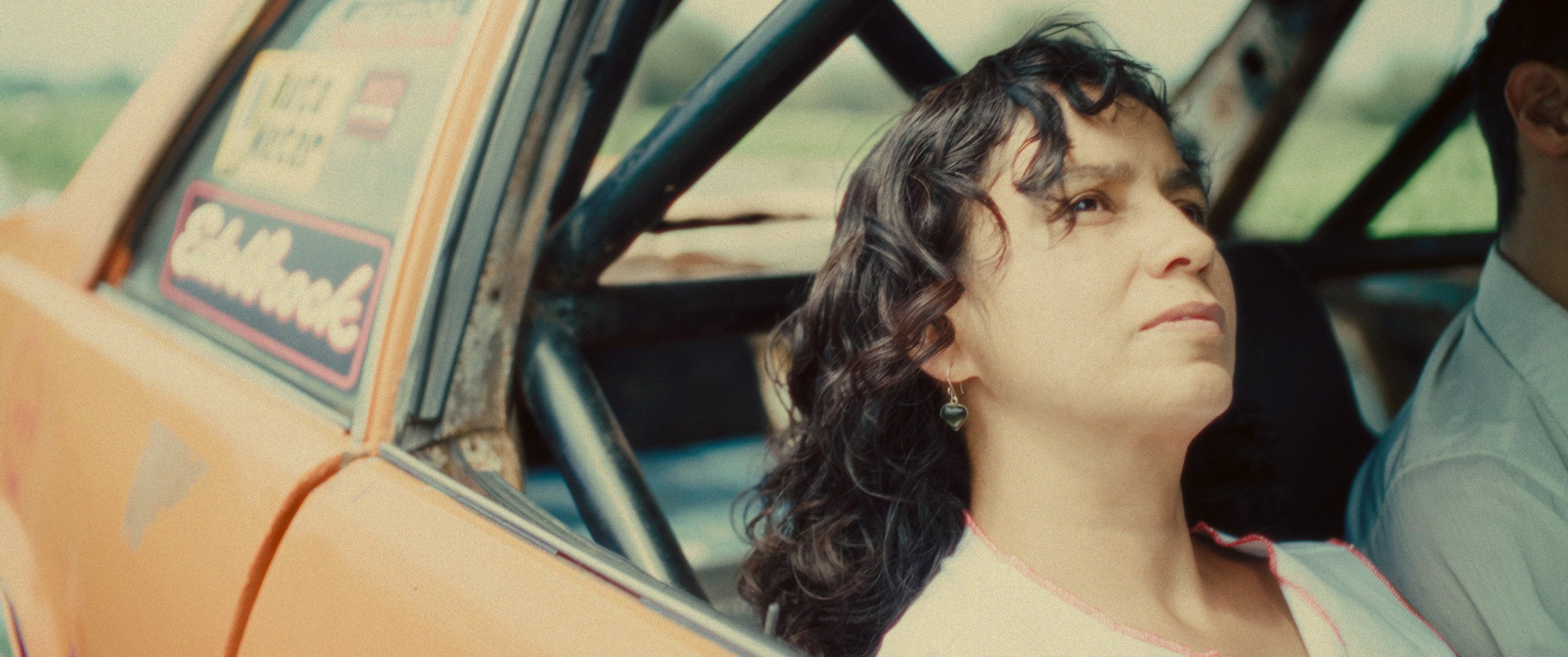Cobre follows the character of Lázaro, who, on his way to the mine one morning, comes across a dead body and thus becomes a suspect. What was the starting point for the film? What inspired the story?
I was thinking about the relationship between violence and the exploitation of natural resources in Mexico. Over the last two decades, the Mexican state, private corporations, and civil society have all been corroded by organized crime. However, the popular portrayal of the “Narcos” tends to reduce everything to a handful of bad guys who sell drugs and kill people. The reality is much more complex.
In many mining towns, workers who have tried to improve their working conditions have faced sudden violence—violence that is often attributed to drug cartels by both the state and the mine owners. This caricature of organized crime has become a convenient scapegoat for anyone looking to silence dissent or dismantle grassroots movements.
I began thinking about the murder of an activist in a mining town, and what might happen to the person who discovers the body. Eventually, I settled on focusing on someone completely unpoliticized. Through that lens, the film gradually shifted focus. It became more about his inner world—his family life, his desires, his fears.
More than in its social dimension, the mine is presented here in terms of its consequences on the body, through Lázaro’s illness. Could you elaborate on this aspect?
I wanted to keep the political context present, so it was important that the mine remained part of the film –even if we never actually see it. Lázaro’s ailing body is a constant reminder of where he lives and works. Hopefully, it creates a link between his physical state and the broader violence and exploitation happening around him.
Lázaro’s character is both complex and comic, always caught in a form of triangulation, even in space. How did you develop his character?
I think I wanted to make a film about someone who doesn’t really know himself or what he wants. It’s unclear whether he’s actually ill, and even he doesn’t seem sure. He appears infatuated with his aunt, but he wouldn’t admit it—not even to himself. He wants to be assertive, but when he’s around his aunt’s boyfriend, he seems more like a child, despite being roughly the same age.
In general, I don’t consciously think about character development. I just write scenes by imagining their lives and observing what they do and say. Eventually, that process builds a character I start to understand as the screenplay takes shape.
The story moves forward slowly, with long, static shots. Why this formal choice?
In Cobre, I wanted to let the characters simply exist within their everyday lives. There are several scenes showing Tere and Rosa at work –tedious, repetitive jobs that take time. To observe those processes properly, I felt long static shots were necessary.
The film doesn’t really follow a traditional narrative; it observes characters trapped in an unsolvable situation: the fact that Lázaro found a dead body. The camera and the pacing reflect this feeling of stasis. They’re stuck—in their lives, in their relationships, in this looming, unresolvable problem.
Confined, sometimes dark interiors and bright, wide-angle exteriors are the main settings and meeting places for the protagonists. How did you conceive the relationship between interior and exterior? And in terms of the positioning of bodies in space?
I didn’t think much about framing until I had the locations. The locations dictated the camera setups. Or perhaps it’s better to say that the camera positions were intuitive decisions shaped by the spaces themselves.
I wasn’t aiming for realism. The locations are somewhat strange. For example, Lázaro’s bedroom feels more like a cave than a typical home for a mine worker. The visual style of the film emerged from the decision to shoot in these unusual, non-realist spaces.
Cobre also explores the question of truth and falsity through different modes of enunciation—rumours, repetition, forged signatures. Could you talk about this tension in the film? What did it imply in terms of acting?
The characters often have to lie or doubt—because of their jobs, or in Lázaro’s case, maybe for the sake of his own freedom. When deceit becomes normal, people might even stop trusting their own feelings and desires. I’m drawn to characters who are internally lost, because I often doubt myself too. Even my job as a professor sometimes feels like a performance, so I can relate.
In terms of acting, I hoped that wouldn’t change anything. Even when the characters are lying or spreading rumours, I wanted the actors to perform as if everything they said was true. For people immersed in deceit, that falsity becomes their truth—their bodies move and react as if it were real.
You work with ambiguity in the relationships between characters—especially between Lázaro and his aunt—through looks and silences. Could you comment on this element?
Their relationship is unspeakable. They probably have some understanding of how they feel, but expressing it would destroy them—and the family. So they pretend, to themselves and to the world, that nothing is happening. Silence became a way to portray that tension.
The soundtrack and minimalist music also contribute to this ambiguity. In what direction did you compose them?
I was composing the music while making the film, just casually playing around—I’m not a musician. Normally, I avoid non-diegetic music, but I found myself imagining Lázaro on his motorbike as I played the piano. I recorded a piece and tried it with the footage and liked the result. If I hadn’t been enjoying the piano during that period, the film probably wouldn’t have any music at all.
Interview by Louise Martin Papasian
